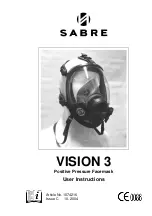
Operating Instructions
Layer Peeling
Layer Peeling reduces multiple reflections in live or saved traces. These are reflections
of the step pulse off of more than one impedance change. A trace when layer peeled is
automatically set as a ZTrace.
The Layer Peeling system is highly dependent on where it starts. The user sets the start
of layer peeling with the active cursor. Good results are only obtained when the start of
layer peeling is set at 50 ohms.
SELECT button
The
SELECT
button switches which trace on-screen is the active trace.
AUTOFIT
Automatically adjusts the TDR resolution to fit an entire cable from beginning to end (identified
by open or short termination) on the screen. Pressing the
AUTOFIT
button a second time
while autofitting will put both cursors visibly on the screen. If the
AUTOFIT
button is held down
for one second then released, the CT100 will vertically center the currently selected trace at
the active cursor. More information can be found in the section describing the
Vertical
Correction
menu below.
CURSOR
Toggles between cursors, making the active cursor inactive and the inactive cursor active.
Pressing and holding the
CURSOR
button for one second then releasing will move any cursors
not on the screen to the screen.
LIBRARY button and menu
Use this menu to access the user library of configurations, cable types, and cable records.
Add Custom Cable Type
Add a custom cable type to be loaded using the option
Load Custom Cable Types
(see
below).
Load Custom Cable Types
Opens a scroll dialog filled with user-defined cable types. Using this dialog, the user can
load the cable types, including associated settings such as Vp. Cable types are added to
this scroll dialog using the
Add Custom Cable
Type
option.
Configurations
Call up interface to load a saved configuration.
20
Mohr CT100 / CT100HF Operator's Manual
















































